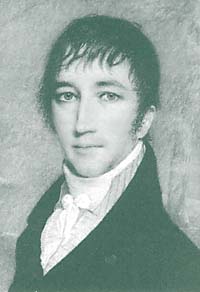 For almost 180 years, families have loved and shared a joyous poem of Christmas with their families.
The poem, A Visit From St. Nicholas, more commonly known as 'Twas the Night Before Christmas,
has been a classic since its first appearance in the Troy Sentinel in 1823. The poem was
published anonymously and, as excitement over the verses grew, everyone wanted to know the name
of the author. In 1837 Clement Clarke Moore, a biblical scholar in New York City, allowed his
name to be attached as author and, in 1844, he included the piece in his own book, Poems.
Moore explained that he had written the poem on the Christmas eve of 1823.
For almost 180 years, families have loved and shared a joyous poem of Christmas with their families.
The poem, A Visit From St. Nicholas, more commonly known as 'Twas the Night Before Christmas,
has been a classic since its first appearance in the Troy Sentinel in 1823. The poem was
published anonymously and, as excitement over the verses grew, everyone wanted to know the name
of the author. In 1837 Clement Clarke Moore, a biblical scholar in New York City, allowed his
name to be attached as author and, in 1844, he included the piece in his own book, Poems.
Moore explained that he had written the poem on the Christmas eve of 1823.
One would think that that would have put the issue to rest. But there was a problem.
 The problem was
that for at least fifteen years before the poem saw the light of a Troy New York day,
by 1808 at the latest, a group of children had been listening to Henry Livingston read them the poem.
And all four of them - Charles, the oldest, and his next-door-neighbor bride Eliza, second son Sidney,
and third son Edwin - all remembered the event and their pleasure in the poem.
The problem was
that for at least fifteen years before the poem saw the light of a Troy New York day,
by 1808 at the latest, a group of children had been listening to Henry Livingston read them the poem.
And all four of them - Charles, the oldest, and his next-door-neighbor bride Eliza, second son Sidney,
and third son Edwin - all remembered the event and their pleasure in the poem.
Whether Henry, dead by the time Moore took credit for the poem, would have cared for the
fame and attention is doubtful.
Whether he would have appreciated someone appropriating his work, though, is a completely different thing.
For over a century and a half, those who remembered have passed on the story to the next
generation. Descendants collected one another's memories in the hopes that
some stray thread would be found that could be pulled on, and maybe, just maybe, unravel the curtain
preventing their story from emerging.
But for all that time, and all that effort, the Livingston descendants failed to make a case
strong enough to put up against the word of the son of the Rector of New York City's Trinity
Church.
There was no smoking gun. The original in Henry's handwriting had burned in a Wisconsin
fire. What it took was someone who could look at the problem from a completely new point of
view. A literary detective who could trace the origin of writing styles.
It took Don Foster.

Reading Henry Livingston is usually a surprise and can be a delight.
Want to know what a pine tree thinks? Ask Henry! Curious about those
rumors of what's holding up the ladies' bosom? Never fear. He'll let you peek through the fingers he holds
over his eyes.
Henry is funny and teasing and loving and sincere. He shines through his writing, and it's really hard not to smile right back.
Moore's lasting claim to fame as a writer lay only with the Christmas poem, and because there were no reprints of his book, and because
the few existing copies of his 1844 book were locked away in library archives, not many people read
his work and judged for themselves. In some sense, Moore was able to maintain his reputation as a great poet exactly because
he wrote such bad poetry. Ironic isn't it?
But why not take this opportunity to compare for yourself the writings of both men,
and see on what side of the question you come down!

